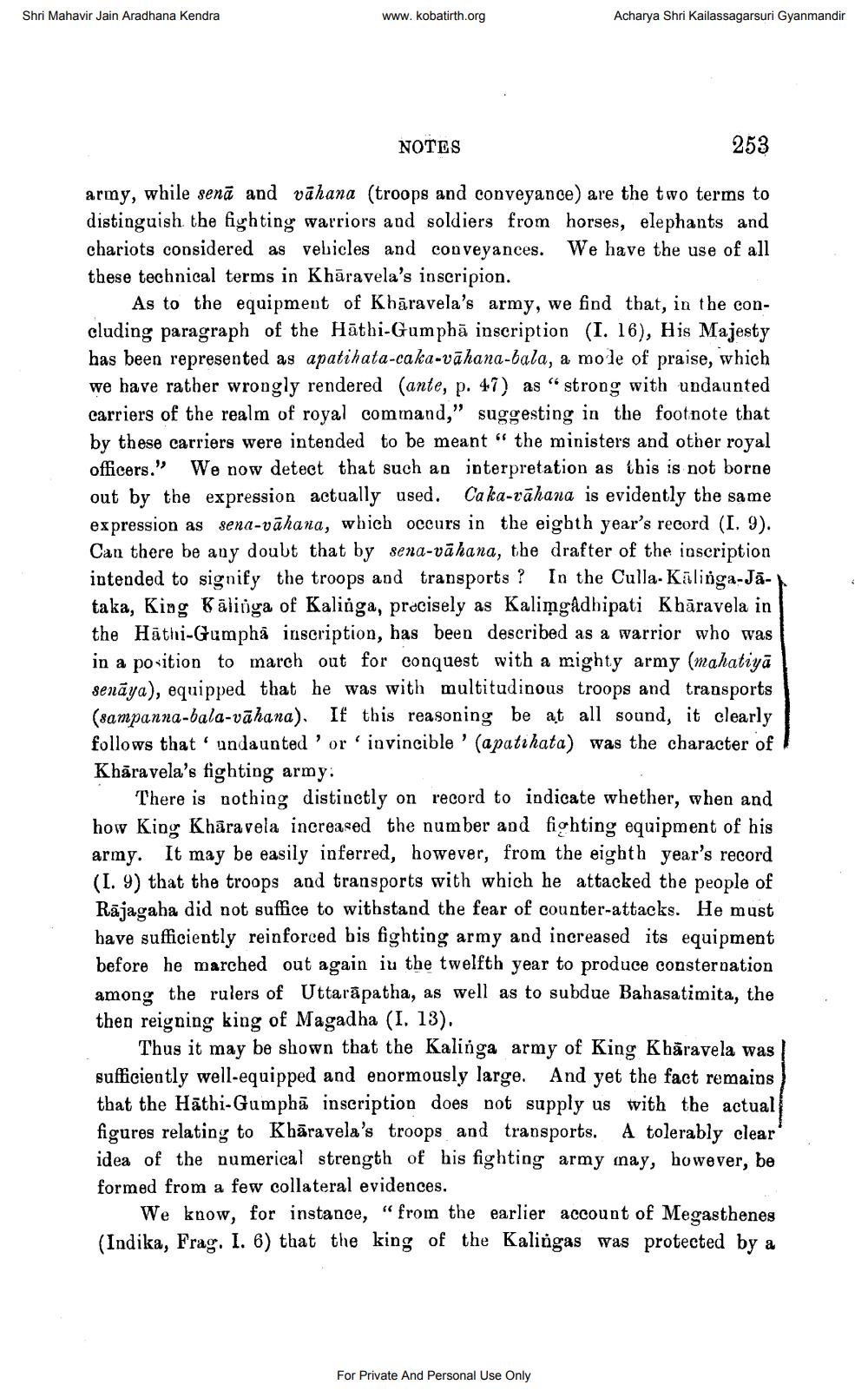________________
Shri Mahavir Jain Aradhana Kendra
www. kobatirth.org
Acharya Shri Kailassagarsuri Gyanmandir
NOTES
253
army, while senā and vāhana (troops and conveyance) are the two terms to distinguish the fighting warriors and soldiers from horses, elephants and chariots considered as vehicles and conveyances. We have the use of all these technical terms in Khāravela's inscripion.
As to the equipment of Khāravela's army, we find that, in the concluding paragraph of the Hāthi-Gumpbā inscription (I. 16), His Majesty has been represented as apatihata-caka-vāhana-bala, a mole of praise, which we have rather wrongly rendered (ante, p. 47) as a strong with undaunted carriers of the realm of royal command," suggesting in the footnote that by these carriers were intended to be meant " the ministers and other royal officers." We now detect that such an interpretation as this is not borne out by the expression actually used. Ca ka-vāhana is evidently the same expression as sena-vāhana, which occurs in the eighth year's record (I. 9). Can there be any doubt that by sena-vāhana, the drafter of the inscription intended to signify the troops and transports? In the Culla-Kalinga-Jātaka, King Kālinga of Kalinga, precisely as Kaliņgadhipati Khāravela in the Hāthi-Gumphà inscription, has been described as a warrior who was in a position to march out for conquest with a mighty army (mahatiyā senāya), equipped that he was with multitudinous troops and transports (sampanna-bala-vāhana). If this reasoning be at all sound, it clearly follows that undaunted' or 'invincible' (apatihata) was the character of Khāravela's fighting army:
There is nothing distinctly on record to indicate whether, when and how King Khāravela increased the number and fighting equipment of his army. It may be easily inferred, however, from the eighth year's record (I. 9) that the troops and transports with which he attacked the people of Rājagaha did not suffice to withstand the fear of counter-attacks. He must bave sufficiently reinforced bis fighting army and increased its equipment before he marched out again iu the twelfth year to produce consternation among the rulers of Uttarapatha, as well as to subdue Bahasatimita, the then reigning king of Magadha (I. 13).
Thus it may be shown that the Kalinga army of King Kbāravela was sufficiently well-equipped and enormously large. And yet the fact remains that the Hathi-Gumpbā inscription does not supply us with the actual figures relating to Khāravela's troops and transports. A tolerably clear idea of the numerical strength of his fighting army may, however, be formed from a few collateral evidences.
We know, for instance, “from the earlier account of Megasthenes (Indika, Frag. I. 6) that the king of the Kalingas was protected by a
For Private And Personal Use Only




